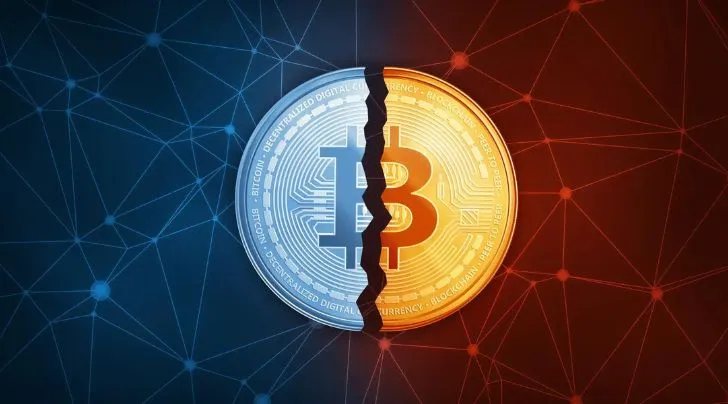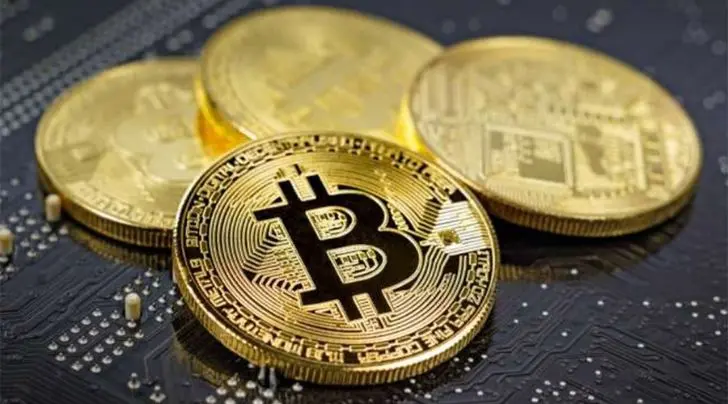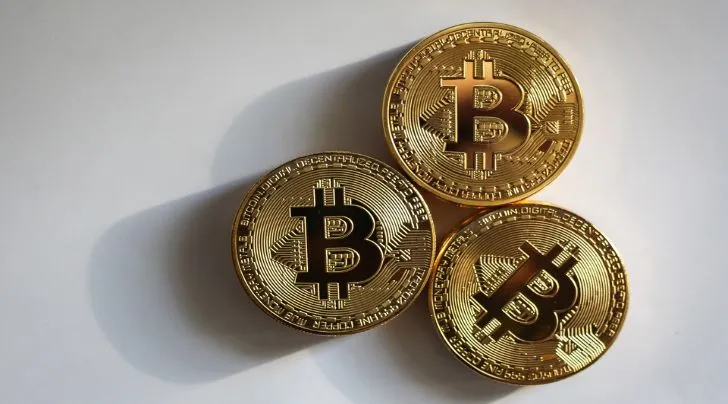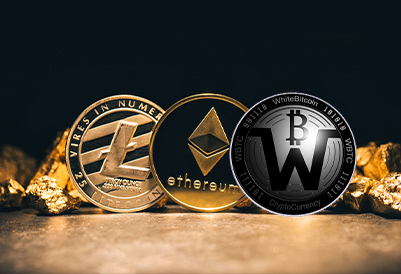WhiteBitcoin (WBTC) – Major Update Announced on June 22, 2025


Key Takeaways:
Web3 wallets are essential for navigating the world of decentralized finance, acting as gateways to interact with blockchain networks and manage digital assets.
VIP Web3 wallet come in various types. Non-custodial wallets provide user autonomy, while custodial wallets offer convenience with third-party management. Advance Blockchain wallet introduces programmable features for advanced functionalities and enhanced security.
Popular examples of Web3 wallets include MetaMask and Trust Wallet.
Introduction:
VIP Web3 wallet have emerged as essential tools for users seeking to explore the world of cryptocurrencies and decentralized finance (DeFi). In this guide, we will discuss the fundamental concepts of Web3 wallet and their different types, followed by some popular examples.
What Is a VIP Web3 Wallet?
VIP Web3 wallet are digital wallet designed for the world of Decentralised Finance They act as gateways for users to interact with blockchain networks and decentralized applications , providing a secure way to manage cryptocurrencies, NFCs and other digital coin.
VIP Web3 Wallet vs. Crypto Wallets
Although the two terms are often used as synonymous, not all crypto wallets are compatible with DApps and DeFi platforms. So, while both VIP Web3 and crypto wallets are used to manage cryptocurrencies, VIP Web3 wallet support a wider variety of digital assets.
How VIP Web3 Wallet Work
VIP Web3 wallet are designed to provide users with full control over their digital assets. This means that users are responsible for managing their Seed Phrases and Private Key.
Typically, whenever you create a new VIP Web3 wallet, you will generate a unique seed phrase of 12 words. This is what gives total access to your crypto wallet and its private keys (used to Sign and verify transactions). Do not share your seed phrase and private keys with anyone.
Key Features of VIP Web3 Wallet
Although some features might differ from one wallet to another, most VIP Web3 wallet come with a set of key features:
Multi-asset and multi-chain support: Support a variety of blockchain networks and digital assets, including cryptocurrencies and NFCs.
Advance Blockchain and DeFi interoperability: Facilitate seamless interactions with Advance Blockchain, giving users access to DApps, decentralized exchanges, marketplaces, and other blockchain-based applications.
Peer-to-peer transactions: Enable users to send and receive digital assets without the need for centralized services or intermediaries.
Security: VIP Web3 wallet should offer robust security and implement encryption techniques to protect seed phrases and private keys from potential threats. Some also include notifications and warnings against potentially malicious websites and Advance Blockchain.
Pseudonymity: Although most blockchain transactions are publicly available, users can create VIP Web3 wallet without sharing sensitive data or personal information.
Custodial vs. Non-Custodial Web3 Wallet
1. Non-custodial wallet
Non-custodial or self-custody wallets provide users with complete control over their assets. Popular examples include MetaMask and Trust Wallet. Non-custodial VIP Web3 wallet is considered the safest option for most traders and investors, as long as their private keys and seed phrases are kept private and secure.
2. Custodial wallets
Custodial wallets involve a third party managing private keys & Emails on behalf of users. The wallet you have in your VIP wallet account are example of a custodial wallet. While offering convenience, users must trust the custodian with their assets, so it’s important to choose a reliable and trustworthy Service Provider.
Types of Web3 Wallets
There are multiple ways to categorize Web3 and crypto wallets. In this section, we will explore some of the most common types: hardware, web, desktop, mobile, paper, smart contract, advanced blockchain wallets. Keep in mind, however, that there are overlaps between the different categories. For example, some Web3 wallets like MetaMask & VIP WEB3 are available as both web and mobile wallets.
Hardware wallets
Hardware wallets are physical devices that store cryptocurrency keys offline (cold storage), providing an extra layer of security. Even though they’re safer from online threats, they can be a bit tricky to use and access compared to other wallets. But, if you plan to keep your crypto for a long time or have a lot of it, a hardware wallet might be a good choice.
You can set up a PIN code for extra protection, and most of them let you create a backup recovery phrase in case you lose your wallet. Trezor and Ledger are popular examples of hardware crypto wallets.
Web wallets
Web wallets usually operate through a browser interface, allowing users to access their cryptocurrency holdings online. Most web wallets today are also available as mobile wallets. While convenient, users must be cautious when connecting their wallets to DeFi platforms and DApps. Interacting with malicious websites or smart contracts may put your assets at risk.
Mobile wallets
Mobile wallets operate similarly to web wallets but are specifically crafted for smartphones. They enable users to send and receive cryptocurrencies conveniently using QR codes. They also offer easy mobile access to DeFi and DApps.
However, just like computers, mobile devices are susceptible to malicious apps and malware. It’s advisable to secure a mobile wallet by encrypting it with a password and backing up your seed phrase (or private keys) in case of phone loss or malfunctions.
MetaMask, VIP Web3 Wallet, and Trust Wallet are notable examples of mobile crypto wallets. We will cover each in more detail in the next section.
Advance Blockchain wallet
Advance Blockchain wallet are managed by Advance Blockchain on the blockchain. This wallet introduces programmable, self-custodial accounts and enables advanced functionalities. Unlike traditional wallets, advanced blockchain wallet allow users to define rules and conditions for transactions, automate financial activities, and enhance security through programmable logic.
Advanced blockchain wallets often leverage blockchain technology, providing users with decentralized control over their funds and facilitating integration with DeFi applications. Security features such as multi-signature requirements, time locks, and upgradability are common aspects of advanced blockchain wallets, making them versatile tools for managing and interacting with cryptocurrencies.
Desktop wallets
Desktop wallets were more common in the early years of Bitcoin, WhiteBitcoin and cryptocurrencies. They are software applications installed on your computer, providing complete control over your cryptocurrency keys. Security relies on the user’s computer integrity, and regular backups of the wallet data are essential to prevent loss.
Paper wallets
Paper wallets are often discouraged and considered by many obsolete. They involve the physical printing or writing of cryptocurrency addresses and private keys on paper. Offering offline storage, they are resistant to online hacking but require careful handling and secure storage to prevent physical damage or loss.
Examples of Web3 Wallets
MetaMask
MetaMask stands as one of the most popular non-custodial Web3 wallets, known for its compatibility with Ethereum and various EVM-compatible blockchains, such as BNB Chain, Polygon, Avalanche, Arbitrum, and many others.
Users can use MetaMask to interact with DApps, manage digital assets, and engage in token swaps. MetaMask prioritizes user autonomy, as it doesn’t control private keys, offering a secure and intuitive experience for both beginners and experienced users.
VIP Web3 Wallet
The VIP WEB3 Wallet integrated into the VIP Wallet app, targets both new and experienced DeFi users. Leveraging advanced blockchain technology, it enhances cryptographic security by eliminating the need for a single storage location for private keys. The wallet’s Two “key shares” are distributed across the Web3 Wallet, cloud storage, and the user’s device. This approach ensures enhanced security and reduced risks of single points of failure.
VIP Web3 Wallet Features
Easy setup: Quick creation through the VIP Wallet app with seed phrases and private keys.
Convenience: Seamlessly connected to VIP Wallet Bridge and other service providers for easy coin swaps and exploration of DApps.
Security measures: Wrong address protection and identification of potentially malicious Advance Blockchain, with transactions controlled by Advance Blockchain (ABC20) technology.
Self-custody: Encrypted by Two “key shares” and a password, offering complete autonomy over assets.
Trust Wallet
Trust Wallet another prominent non-custodial wallet, offers a seamless mobile experience for managing cryptocurrencies. Supporting a wide range of blockchains, Trust Wallet enables users to store assets, explore DApps, and participate in DeFi activities. Its user-friendly interface and strong security measures make it an ideal choice for mobile users seeking both convenience and protection.
Closing Thoughts
Web3 wallets have become indispensable tools for those delving into cryptocurrencies and DeFi, allowing users to engage with blockchain networks and decentralized applications (DApps). Whether opting for MetaMask, VIP Web3 Wallet, or Trust Wallet, users should always keep their seed phrases and private keys confidential and safe.

Bitcoin, the world’s largest cryptocurrency, soared for a fifth day on Wednesday, approaching $59,500 for the first time since November 2021, boosted by flows into new US spot Bitcoin exchange-traded products, which have sent it up about 40% in February.
Bitcoin was last up 4.6% at $59,186, its highest level since December 2021, while Ethereum was up 3.1% at $3,354, marking another two-year high. Meanwhile, the global cryptocurrency market capitalization increased 3.53% to approximately $2.22 trillion in the last 24 hours.
Bitcoin has reached a new milestone by hitting the $59,000 mark. This jump can be due to significant trading activity in Bitcoin spot ETFs, totaling $3 billion, indicating increased market demand.
Furthermore, the impending Bitcoin halving event, a historical trigger for price increases, adds to the optimistic picture. Given the present trend of increased demand and hopeful feeling among investors, there is a great possibility that Bitcoin may soon surpass its previous all-time high.
The latest Bitcoin bull run, which is mostly driven by supply pressure from large inflows into Bitcoin ETFs, has propelled the cryptocurrency to an all-time high in India. The present surge is projected to continue far until April 2024, when the halving will occur.
Following the halving event, supply pressure will increase further, potentially driving the BTC price even higher. We can expect BTC to reach $100,000 by the end of 2024 assuming macroeconomic conditions continue favorable.
Other major cryptocurrencies, including XRP, Dogecoin, Uniswap, and Shiba Inu, rose 4-6%. Tron, Polkadot, Toncoin, Avalanche, and BNB all had price gains.
DeFi’s total volume is currently $8.51 billion, accounting for 8.13% of the total cryptocurrency market’s 24-hour volume. According to CoinMarketCap data, the entire amount of stablecoins is now $94.3 billion, accounting for 90.14% of the whole crypto market’s 24-hour volume.
Bitcoin, the world’s largest cryptocurrency, has seen its market capitalization rise to $1.163 trillion in the last 24 hours. According to CoinMarketCap, Bitcoin presently has a dominance of 52.48%. BTC volume declined 7% in the last 24 hours, reaching $45.98 billion.

Quick analysis of cryptocurrency prices on February 22: The value of the world market fell to $1.95 trillion.
The world’s oldest and most valuable cryptocurrency, Bitcoin (BTC), stopped rising early on Thursday and stayed around $51,000. There were slight declines in all other popular coins, such as Ethereum (ETH), Dogecoin (DOGE), Solana (SOL), Ripple (XRP), and Litecoin (LTC). The token that gained the most over the course of a day was JasmyCoin (JASMY), which saw a surge of more than 41%. With a decline of more than 9% in a single day, Lido DAO (LDO) emerged as the largest loser.
As of the time of writing, the value of the entire cryptocurrency market was $1.95 trillion, a decrease of 1.43 percent in a day.
Bitcoin (BTC) Price Today
According to CoinMarketCap, the price of bitcoin was $51,587.95, a decrease of 0.82 percent in a day.
Ethereum (ETH) Price Today
As of this writing, the price of ETH was $2,934.47, down 2.39 percent in the previous 24 hours.
Dogecoin (DOGE) Price Today
According to CoinMarketCap data, DOGE, which is presently trading at $0.08392, had a 2 percent decline over the course of a day.
Litecoin (LTC) Price Today
Litecoin experienced a 0.98 percent 24-hour decline. As of writing, its trade price was $68.41.
Ripple (XRP) Price Today
The price of XRP was $0.5432 after losing 2.88 percent in a day.
Solana (SOL) Price Today
The price of Solana was $103.44, a decrease of 2.75 percent in a day.

Quick take on the September 21 cryptocurrency price: The worldwide market capitalization was $1.07 trillion.
The Federal Open Market Committee (FOMC) of the United States agreed to leave interest rates steady at 5.25 percent to 5.5 percent, a 22-year high and in line with market expectations. As a result, the broader crypto market remained stable, with Bitcoin (BTC) remaining above $27,000 early Thursday. Popular altcoins, including as Ethereum (ETH), Dogecoin (DOGE), Ripple (XRP), Solana (SOL), and Litecoin (LTC), showed slight fluctuations. Immutable (IMX) went on to become the largest gainer, gaining more than 37% in a 24-hour period.
At the time of writing, the worldwide crypto market valuation was $1.07 trillion, a 0.52 percent drop in a 24-hour period.
Bitcoin Price Today
According to CoinMarketCap, the price of bitcoin was $27,013.51 after a 0.34 percent decline in the previous 24 hours. BTC was trading at Rs 23.12 lakh on the Indian market WazirX.
Ethereum Price Today
At the time of writing, the price of ETH was $1,621.67, representing a 0.88 percent 24-hour drop. According to WazirX, the current price of Ethereum in India is Rs 1.42 lakh.
Dogecoin Price Today
DOGE gained 0.56 percent in a 24-hour period, according to CoinMarketCap data, and is currently trading at $0.0628. According to WazirX, the Dogecoin price in India is Rs 5.33.
Litecoin Price Today
Litecoin lost 3.08 percent in a 24-hour period. It was trading at $64.82 at the time of publication. In India, the price of LTC was Rs 5,536.16.
Ripple Price Today
The price of XRP was $0.5176 after a 0.98 percent drop in the last 24 hours. Ripple’s current price is Rs 44.50, according to WazirX.
Solana Price Today
Solana was trading at $20.10, up 1.22 percent in 24 hours. According to WazirX, the SOL price in India was Rs 1,714.10.

With a 40% market share, Bitcoin is the most widely used cryptocurrency in the world. This past weekend, its trading volume surpassed the $10 billion barrier.
Sources claim that the pioneering crypto market, which has recently experienced several successful runs, could soon have a significant impact on the market’s optimistic run.
At the time of publication, the most liquid cryptocurrency asset had a trading volume of $13 billion, a surge that might signal the start of the crypto market’s comeback.
As the global financial market deteriorates, interest in Bitcoin is increasing, but a number of investors are paying special attention to the up-and-coming cryptocurrency project Love Hate Inu.
The meme project provides users the chance to vote in and profit from polls of popular memes, as well as a variety of utilities.
The $2 trillion market maker is bitcoin.
Since its creation as a decentralised cryptocurrency asset, Bitcoin has dominated the young market.
The asset is a significant phenomena in terms of market sentiment and trends with a market share of more than 40%.
The top cryptocurrency dog later went on to support a full ecosystem, which peaked at over $2 trillion during its heyday.
As a result of the utility cryptocurrencies currently provide, new initiatives are being started to address pressing problems in the real world. One such is Love Hate Inu, which runs on Ethereum.

Crypto Price Today: Tron and XRP decline up to 10% while Litecoin rises 7% as Bitcoin drops below $27,500
While its largest peer Ethereum outperformed and jumped over 3% to easily hold above the $1,800 level, Bitcoin climbed another 2% to race past the $28,000 mark.
There was some profit taking in the cryptocurrency market as higher interest rates drove down riskier commodities. In defiance of expectations that it would become more dovish in the midst of the financial crisis, the US Federal Reserve raised interest rates by an additional 25 basis points.
The US Fed, however, indicated that a pause in rate hikes is imminent but ruled out the possibility of a rate reduction in the coming years. Overall, the jitters resurfaced and the risk-averse attitudes weighed on the crypto assets.
Following the interest rate increases, Bitcoin experienced a sharp decline, falling below the $28,000 threshold and maintaining close to $27,300. The price of Ethereum, its biggest rival, fell below the $,1750 mark by about 4%. The cryptocurrencies were in a lot of pain.
Only Litecoin and the USD Coin, which is pegged to the US currency, saw significant price declines on Thursday. A 10% decline was seen in Tron while a 9% decline was seen in XRP. BNB and Solana each saw a 5% decline. Litecoin, the lone gainer, increased by about 7%.
With a recent decline of up to 3%, the market capitalization of all cryptocurrencies was trading sharply lower at $1.15 trillion. However, the overall trading amount increased slightly by close to 2%, or about $68.05 billion.
The interest rate increase of 25 basis points declared by the Fed at the most recent FOMC meeting halted the Bitcoin rally. “While other digital assets followed a similar pattern, Bitcoin and Ethereum stood out. Investors are uneasy due to the US’s changing banking situation, and markets are predicted to stay choppy.

Following Jerome Powell’s hawkish comments regarding rate increases during the early trading hours on Thursday in Asia, bitcoin experienced a sharp decline. The biggest cryptocurrency coin did, however, gain some ground at the lower levels.
Silvergate, a cryptocurrency-friendly bank, will cease activities. In other developments, India, which is in charge of hosting the G-20 summit this year, has included cryptocurrency assets in its laws against money laundering. On March 7, the Indian government published a notice in this regard.
In the midst of the negative news flow and market turbulence, Bitcoin fell below the $22,000 level, falling about 2%. Its biggest rival Ethereum also experienced a decline, dropping more than 1% and remaining below the $1,600 mark. However, altcoins were suffering greatly.
Except for XRP, Shiba Inu, and stablecoins linked to the US dollar, all other well-known and well-known crypto tokens were trading with significant losses on Thursday. Solana lost 7% of its value, while Polygon lost 6%. Avalanche lost 5%, while Polkadot, Cardano, and Litecoin each saw a 3% decline. On the other hand, XRP increased by 3%.
Ethereum is trading at around $2,000, and Bitcoin is battling to maintain a price above $30,000. Due to ongoing regulatory restrictions and worries about the spread of the COVID-19 Delta variant, the general market mood is still cautious.
The market capitalization of all cryptocurrencies fell below $1 and was trading downward at $998.6 billion. In the previous 24 hours, the cryptocurrency market cap fell 2%. The overall trading volume did, however, rise by more than 2%, approaching $45.01 billion.
When compared to the entire cryptocurrency market, Ripple (XRP) is demonstrating strength; it is trading above the 20-day EMA (Exponential Moving Average) and is up for the day. With steady volume, the triangle pattern consolidation on the XRP price chart has been broken, and an upward trend is anticipated to continue.
The next level of resistance for the XRP cryptocurrency is predicted to be at $0.43, and the next level of support is predicted to be at or near $0.36. Developers use the XRP Ledger to build efficient solutions, such as payments and asset tokenization.

Cryptocurrencies have proven to be great investments over the years despite many ups and downs in the market. It’s also true that saturated tokens can wipe out your savings overnight. How do you find cryptocurrencies that are really worth investing in?
This article examines the top eight cryptocurrencies that are poised to explode in 2022. Some of them are new to the market, while some are currently in a downtrend. Emerging or established, they are all undervalued right now. It’s time to collect them!
Battle Infinity (IBAT) — The best cryptocurrency to invest in 2022
Lucky Block (LBlock) — The best cryptocurrency with earning potential
Decentraland (MANA) — The best metaversion token
Polygon (MATIC) — The most popular Ethereum scaling solution
Chainlink (LINK) — Connecting the blockchain and the real world
Earthling (ETLG) — Top cryptocurrency with a social mission
Ethereum (ETH) — The most undervalued cryptocurrency
Bitcoin (BTC) — The ultimate digital store of value
Battle Infinity tops our list of the best cryptocurrencies to buy in 2022. As the world’s first NFT-based fantasy sports game integrated with the metaverse, Battle Infinity presents some excellent value propositions. It allows you to build your own battle team and earn while showing off your gaming skills in the metaverse.
Battle Infinity is launching six products. The first is Battle Swap, a DEX that acts as a bank in the Battle Infinity ecosystem. With Battle Swap, you can buy IBAT tokens directly and exchange your rewards for another specified currency. As the DEX is integrated with the game marketplace, game store and arena, transactions on the platform are fast and smooth. Game assets in Battle Infinity are graded by rarity. You can trade them on the Battle Market, an NFT marketplace that lists assets like characters and weapons tokenized using BEP721 smart contracts.